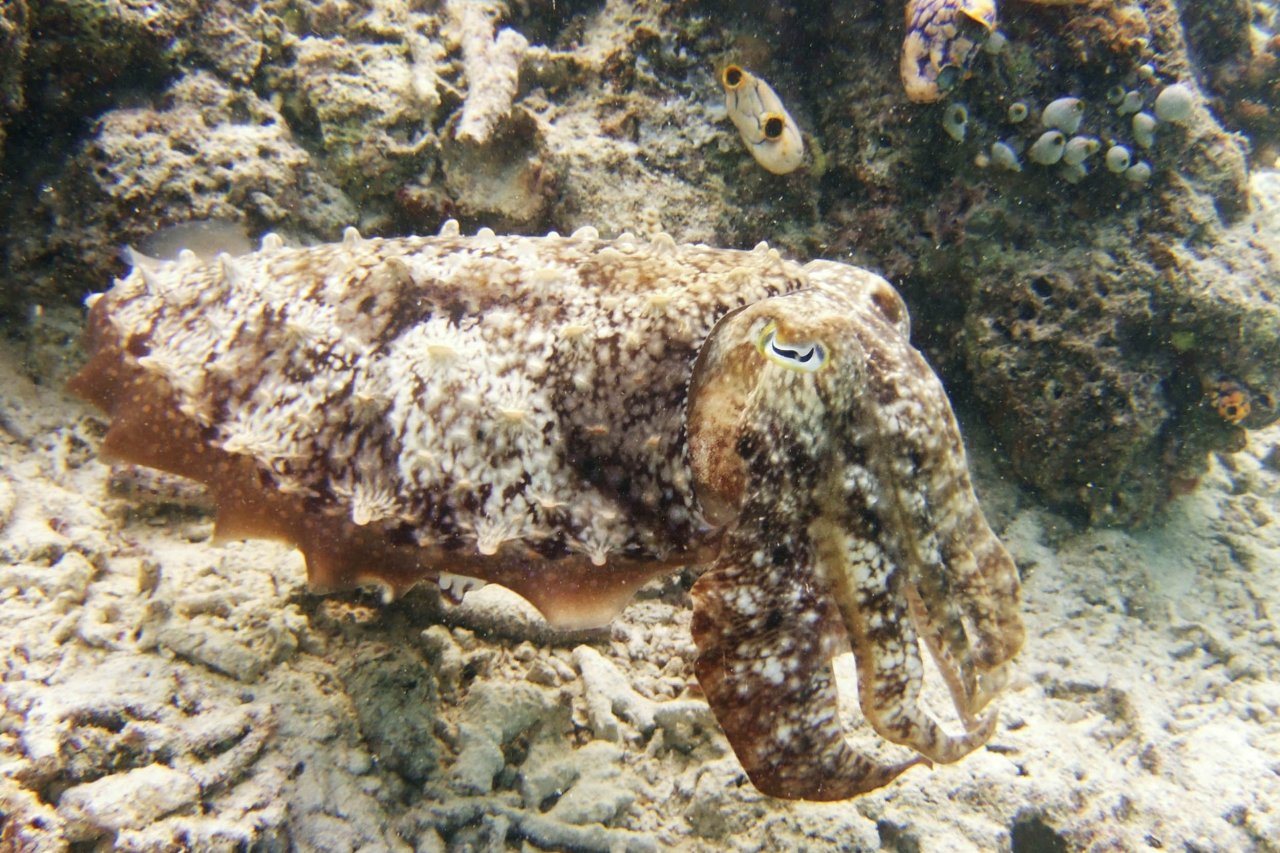Certain animals, like the octopus and cuttlefish, are natural camouflage artists that can change the color and pattern of their skin based on their environment. For example, check out this octopus blending in with a clump of algae, and then immediately changing color (jump to 0:16):
Drawing on this tremendous adaptation for inspiration, researchers recently designed and created a camouflage-like material that can change its appearance when illuminated.
The skin of cephalopods, the class of animals that includes octopus and cuttlefish (and squid and nautiluses), includes three layers: The surface layer contains the pigments that control what the animals looks like; the middle layers contains muscles that can shift around the orientation of these pigment-containing cells and thus change the skin's color; and the bottom layer helps sense the color of its surroundings.
In designing the new camo-material, researchers drew on this layered set-up. The bottom layer senses background color (for now, just black or white) using electrodes. This information is transferred to the middle layer, consisting of actuators (a type of motor) that can heat up if the background is white or the sheet is illuminated. The top layer consists of black pigments that turn transparent under heat; so if the sheet is illuminated with white light, the actuators will heat up and it will appear white. Otherwise, in the dark, it stays black.
"It's nowhere near for being relevant for active camouflage," said John Rogers, one of the authors of the study describing the technology, published in the Proceedings of the National Academy of Sciences. But Rogers, co-author Roger Hanlon and their team accomplished their main goal, which was to "look to nature to gain insights into systems that have this autonomous response to its surroundings."
For the moment, the material can only switch between black and white, but Rogers tells Newsweek his team hopes to find a way to get this material to turn different colors.
Despite its monochrome limitations, potential applications nevertheless abound. One art professor in Chicago has already expressed interest in making dresses or other clothing that respond to the wearer's surroundings. In this case, the fashionista would likely want to stand out, and not blend in, so he would use a sort of "anti-camo" property in the design instead.
"Overall, this is an impressive demonstration of... pattern recognition and color camouflaging," said Michael McAlpine, a researcher at Princeton University who wasn't involved in the study.






























